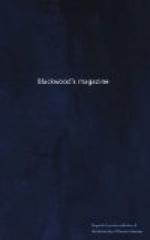Then how knowingly he treats of the fat upon the sheep:—
“The formation of fat in a sheep commences in the inside, the net of fat which envelopes the intestines being first formed. After that, fat is seen on the outside, and first upon the end of the rump at the tail head, which continues to move on along the back, on both sides of the spine to the bend of the ribs, to the neck. Then it is deposited between the muscles, parallel with the cellular tissue. Meanwhile it is covering the lower round of the ribs, descending to the flanks until the two sides meet under the belly, from whence it proceeds to the brisket or breast in front and the shaw behind, filling up the inside of the arm-pits and thighs. The spaces around the fibres of the muscles are the last to receive a deposition of fat, but after this has begun, every other part simultaneously receives its due share, the back and kidneys receiving the most—so much so that the former literally becomes nicked, as it is termed; that is, the fat is felt through the skin to be divided into two portions. When all this has been accomplished, the sheep is said to be fat or ripe.”—Vol. ii. p. 93.
But the enjoyment of tracing the accumulating fat is not enough for our author—as soon as his sheep is ripe, he forthwith proceeds to slaughter it; and though he describes every part of this process accurately, and with true professional relish, coolly telling us, that “the operation is unattended with cruelty;” yet we must be content to refer our readers to the passage (vol. ii. p. 96) as an illustration of his skill in this interesting branch of farm-surgery. He is really an amiable sheep-operator, our author—what placid benevolence and hatred of quackery appear in his instructions— “Learn to slaughter gently, dress the carcass neatly and cleanly, in as plain a manner as possible, and without flourishes.”—p. 167.
But whisky-toddy and fat mutton are not the only things our author relishes. He must have been a farm-servant, living in a bothy, at least as long as he drove on the road or practised surgery in the slaughter-house. After describing the farm-servant’s wages and mode of living, he thus expands upon the subject of Scottish brose:—




